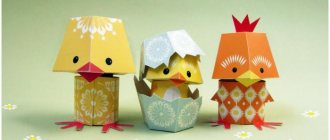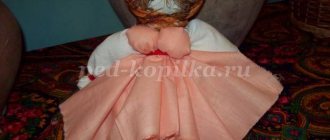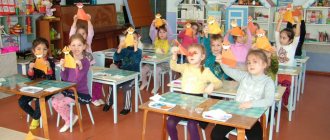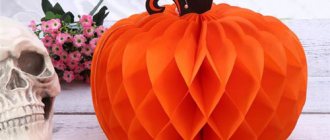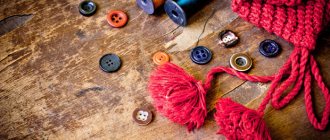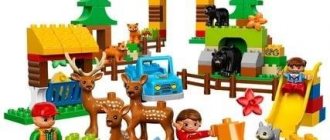Construction games
Construction games.
Younger age.
“Let’s build a doll shop.”
Target
: To consolidate the ability to build a store from cubes and bricks, to bring the job to the end, to cultivate friendly relations in the game.
A game:
The teacher brings small dolls into the group. Everyone has a handbag. He asks: “Why did our dolls take the bags?” Together they decide that the dolls are going to the store, but they can’t find it. Children are invited to help the dolls and build a store out of cubes and bricks. The guys build: some - according to the model given by the teacher, some - on their own.
"Zoo for wild animals."
Target:
Strengthen the skills of joint activities with the teacher (build cages for animals); continue to learn how to play around with your construction.
A game:
The teacher shows toys - figurines of wild animals, clarifies where they live, and together with the children decides to build a zoo for them.
"Zoo".
Target:
Strengthen the ability to build houses for different animals from cubes; develop respect for animals.
A game:
The teacher reminds that animals at the zoo have houses where they hide from the rain, and makes them want to build houses for them. On the table is a set of figurines of wild animals. After construction is completed, they play with them.
"Let's build a house for animals."
Target:
Develop memory, speech; Encourage children to create variations of designs by adding other details.
A game:
Children are asked to choose one or two pets and build a house for them using building parts.
"Garage".
Target:
Strengthen the ability to build from parts of a large builder; beat the building.
Game:
Game situation:
small cars are standing in different places, and it’s hard to find the one you need. The teacher clarifies where the cars “live” and leads the children to the idea that they need to build garages. The guys choose their own car and build a garage for it themselves. If desired, additional structures can be added. Then, if they want, they play with the buildings.
"Let's build a house for a bunny."
Target:
Develop children’s constructive skills, the ability to demonstrate how to build simple structures, and enjoy the results; consolidate the names of details and verb forms in speech; develop motor skills, the ability to correlate movements with words.
A game:
The snow bunny came running, but he had nowhere to live...
"Let's build a house for the bear."
Target:
Develop children’s constructive abilities, teach them to correlate the size of a building with the size of an object; consolidate knowledge about construction details; develop the planning function of speech.
A game:
Three bears from a fairy tale come to visit the children and ask them to build a house for them, each separately.
"Terem for animals."
Target:
Develop children's constructive skills, learn to compare buildings with the size of an object, learn to pronounce a sequence of actions in speech.
A game:
The bear destroyed the animals' mansion; they have nowhere to live.
"At the request of the children."
Target:
Improve children's skills when working with construction sets, learn to decorate the design, play with it; bring pleasure from games and collective activities.
Middle group.
"Garages for cars."
Target:
Strengthen your knowledge of the names of building materials; cultivate the desire to build together, amicably.
Main content:
children are invited to build garages of different sizes and shapes.
"House for gnomes."
Target:
Strengthen the ability to design objects (houses) in accordance with certain conditions.
Main content:
children build houses of different designs.
"Furniture for a doll."
Target:
To develop children’s constructive abilities, the ability to create simple buildings; consolidate knowledge about furniture and its purpose.
“Construction of houses for kittens of different sizes.”
Target:
To consolidate knowledge of the concepts “big - small”; develop constructive skills, speech.
A game:
The doll draws attention to the fact that the kittens meow pitifully because they have no homes and are cold. Asks the children to build houses for the kittens from building material according to the size of the kittens so that they fit in the house.
"Trucks".
Target:
Develop children's constructive abilities, fine motor skills of fingers, learn to build cars from LEGO construction sets; learn to play without conflicts, in harmony.
"Garages for transport."
Target:
Teach children to organize themselves into groups and unite with a common plot, teach them to play without conflicts, in harmony. Offer small toys to play with.
Senior group.
"Autumn in the forest."
Target:
Mastering the methods of constructing a landscape composition.
A game:
From geometric shapes of different colors, sizes, shapes, create a picture - a landscape.
"Home for Thumbelina."
Target:
Strengthen your skills in working with paper and cardboard; develop precision of movements, attention, perseverance, interest in activities, speech.
A game:
Thumbelina has nowhere to live and the children, using colored paper, matchboxes, glue, brushes, scissors, napkins, make furniture and arrange a home for Thumbelina in a box.
"Gifts for Kids."
Target:
Increase children's self-esteem; practice manual skills; bring joy from handmade crafts.
A game:
Samodelkin invites the children to make gifts for the little ones; during New Year's week everyone should receive gifts. So that the children don’t feel sorry for giving, Samodelkin suggests making two crafts.
"A mosquito made of natural material."
Target:
Develop fine motor skills of the fingers and precision of movements; strengthen the skills of connecting parts of a craft; consolidate knowledge about the appearance and distinctive abilities of insects; teach how to pronounce preparation for work, the sequence of actions.
Material:
maple lionfish, dried leaves, acorns, sticks, thin wire, plasticine.
"Insects from natural materials."
Target:
Strengthen knowledge about insects; offer to choose from natural materials suitable components for the insect they want to make.
"Making crafts - frogs from paper."
Target:
Strengthen the ability to fold paper crafts; develop accuracy of movements, eye, attention, perseverance.
A game:
So that the frog Zhanna does not get bored, we need to make her girlfriends. Play with crafts: whose frog will jump the farthest. Fill the paper lilies on the “pond” with frogs.
"In the world of fantasy."
Target:
Invite children to fantasize, dream of building a fantastic city on another planet, come up with a name for it and what the inhabitants will be called. Teach children to build buildings collectively, plan upcoming work together, and carry out their plans together.
"Builders".
Target:
To develop children's creative imagination and the ability to jointly develop play using construction sets and building materials.
"Children's Choice"
Target:
Teach children to build buildings and unite in one group, together come up with a plot and play it out. Learn to play together, not quarrel, give in to each other.
"Beautiful buildings".
Target:
Teach children to build buildings, uniting in groups, inventing stories and acting out them. Learn to make buildings that are sustainable, diverse, and coordinate individual plans with the general one.
"My city".
Target:
Learn to creatively implement a plan, develop imagination, consult with peers when performing work, distribute responsibilities.
"Garages and cars."
Target:
Teach children to organize themselves into groups and unite with a common plot, teach them to play without conflicts, in harmony. Offer small toys to play with.
Preparatory group.
"Playground".
Target:
Activate the ability to create object structures from building materials according to the conditions. Improve constructive skills.
A game:
children are offered wooden building material with attributes to play with - cars, trees, figures of people, etc.
"Let's build a house in the village."
Target:
Develop children's constructive skills, ingenuity, imagination, ability to navigate in space; activate your verb dictionary.
A game:
offer to build the kind of house they would like to have; suggest that you first draw it schematically, and then build it using a builder and decoration elements.
"Napkins for the festive table."
Target:
Develop aesthetic taste, the ability to do something with your hands; make you want to do something nice.
A game:
Invite children to cut out napkins for tables, decorating the edges in different ways.
"Magic Glade".
Target:
Strengthen the ability to engage in collective activities, develop aesthetic taste, the ability to compose a composition, and navigate on a sheet of paper; develop imagination and creative thinking.
A game:
invite children to imagine that they are in a magical meadow and it needs to be decorated with beautiful flowers. Think about what flowers will be, color, shape, how to place them and where. Make not only flowers that children know, but also fabulous, unusual flowers.
"Architects".
Target:
To develop children's creative imagination and the ability to jointly develop play using construction sets and building materials.
Get text
Summary of a lesson in the first junior group on the topic “Construction from cubes”
Summary of educational activities in the first junior group “Tower for a cockerel”
Compiled by: Yanchenko Elena Anatolyevna, teacher of MBDOU “Kindergarten No. 11”, Seversk, Tomsk region. Goal: to form children’s ideas about cubes as parts of a construction set. Objectives: • develop productive (constructive) activities of children; • involve in the design of towers based on the model together with adults; • to form children’s ideas about the options for arranging parts on a plane (placing a cube on a cube); • develop manual skills and thinking; • develop children's active speech and ability to answer simple questions. Vocabulary: cube, tower, high, cockerel. Material: sample, 3 cubes for each child, cockerel - soft toy;
cockerel - a toy for playing with (according to the number of children). Progress of organized educational activities
1. Organizational moment The teacher brings a cockerel toy into the group. Educator: guys, look who came to us? (Children's answers.)
- That's right, it's a cockerel.
Say hello to the cockerel (Children say hello.)
Look how beautiful the cockerel is.
On his head he has a large red comb, a beard, eyes, and a beak. The cockerel has legs, wings and a tail. Next, the teacher and the children examine the cockerel. The tell-repeat-show technique is used. Educator: the cockerel is singing a beautiful song. How does the cockerel sing? (Children's answers.)
- That's right, the cockerel sings ka-ka-re-ku.
Let's all say together: cuckoo! - Guys, show how the cockerel flaps its wings (Children imitate the movements.)
The cockerels went for a walk in the group, beautifully flapping their wings, raising their legs high.
The outdoor game “Let's walk like cockerels” is performed. Educator: our cockerels were tired, they sat down on chairs to rest. The children sit at the tables. 2. Main part. Construction Educator: guys, the cockerel likes to sit high, look far away and sing a song loudly: ku-ka-re-ku! Let's build a tower for the cockerel so that our cockerel sits high and sings a song loudly. The teacher looks at the sample with the children.
Educator: look what a high tower I have. This tower is made of cubes. The cube stands on the cube. This is the kind of tower we will build. Look how I build a tower. I take a cube and put it on the table, I take another cube and put it on top of the cube, and I put another cube on top. This is the tall tower I ended up with. How did I build the tower? (Children's answers.)
- That's right, first I put one cube, then I put another cube on it, and another cube on top.
Now take the cube that is on your table and we will build a tower. Place the cubes carefully so that the tower does not fall apart. If necessary, the teacher helps the children and shows how to place a cube on a cube. Next, the teacher, together with the cockerel, examines the resulting towers and notes how beautiful, smooth, and tall they all are. The cockerel praises the children. 3. Summary The teacher gives the children small toys to play with - cockerels, and offers to play, for example: put the cockerel on the tower, walk around the tower and see how beautiful it is, etc.
Educator: these are the beautiful towers we have! - Guys, what did we build the towers from? (Children's answers.)
- That's right, we built towers from cubes.
How did we place the dice? (Children's answers.)
- Yes, we placed cubes exactly on cubes. We have a tall tower. Well done boys. Our cockerels are happy that they can now sit high and sing the song cuckoo-re-coo loudly!
We recommend watching:
Synopsis of an educational entertaining lesson for children of the first junior group Synopsis of an integrated lesson on the formation of elementary mathematical concepts using a synopsis of the educational situation in the 1st junior group Synopsis of a lesson in the first junior group. Construction from bricks
Similar articles:
Lesson summary for an early age group. Let's play with cubes
Lesson summary “Red color”. Junior group
Lesson summary “Yellow”. First junior group
Summary of a lesson in an early age group on the poem “The Dirty Girl”
Lesson summary for an early age group. Chicken and duckling
